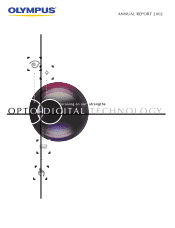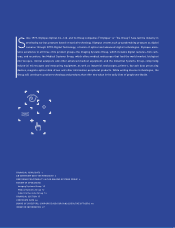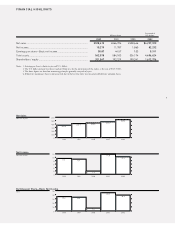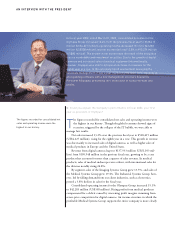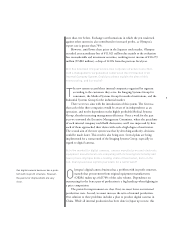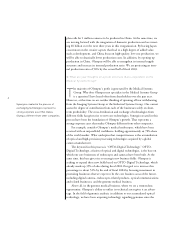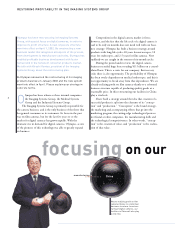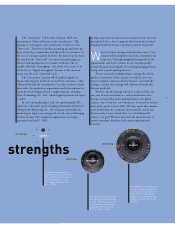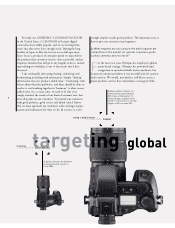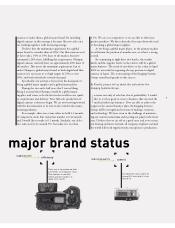Olympus 2002 Annual Report Download - page 8
Download and view the complete annual report
Please find page 8 of the 2002 Olympus annual report below. You can navigate through the pages in the report by either clicking on the pages listed below, or by using the keyword search tool below to find specific information within the annual report.
focusing on our
manufacturing in
We are realizing profit on film
cameras thanks to a reformed
business structure. In restruc-
turing of digital cameras, our
facilities in China will also play
a vital role.
China
6
RESTORING PROFITABILITY IN THE IMAGING SYSTEMS GROUP
Olympus has been restructuring its Imaging Systems
Group, with special focus on digital cameras, in order to
improve its profit structure. A new corporate structure
went into effect on April 1, 2002. By constructing a new
business model that integrates all aspects of the process,
from development to manufacture and sales, Olympus has
enabled profitable business development with faster
turnaround in the turbulent consumer products market.
We talk with Hiroshi Komiya, president of the Imaging
Systems Group, about the restructuring plan.
Q: Olympus announced the restructuring of its imaging
products business in January 2002 and the new system
went into effect in April. Please explain your strategy in
concrete terms.
Olympus has been reborn as three internal companies:
the Imaging Systems Group, the Medical Systems
Group and the Industrial Systems Group.
The Imaging Systems Group is primarily responsible for
the camera business, and is the only business of the three that
has general consumers as its customers. Its focus in the past
was on film cameras, but for the last five years or so the
market for digital cameras has grown rapidly. With the
dramatic rise in demand for digital cameras, Olympus, as one
of the pioneers of this technology was able to greatly expand
its business.
Competition in the digital camera market is fierce,
however, and the fact that the life cycle of a digital camera is
said to be only six months does not mesh well with our busi-
ness strategy. Olympus has built a business strategy around
products with long life cycles: 20 years for microscopes, 10
years for endoscopes, and 2.5 years for film cameras. Now
suddenly we are caught in the torrent of six-month cycles.
During the period under review, the digital camera
business recorded huge losses totaling ¥11 billion on a consol-
idated basis. This is a crisis for our company. But in every
crisis there is also opportunity. The profitability of Olympus
has been overly dependent on medical endoscopes, and this is
our opportunity to break away from that dependence. We are
already realizing profit on film cameras thanks to a reformed
business structure capable of producing quality goods at a
reasonable price. In this restructuring our facilities in China
play a vital role.
I have built a strategy around the idea that creation of a
successful product is split into the elements of its “concep-
tion” and “production.” “Conception” is the brand strategy,
the marketing and accompanying efforts that go into the
marketing program, the cutting-edge technological prowess
not found at other companies, the manufacturing skills and
the technological competitiveness. In other words, “concep-
tion” is the creation of value, and “production” is the realiza-
tion of that value.

